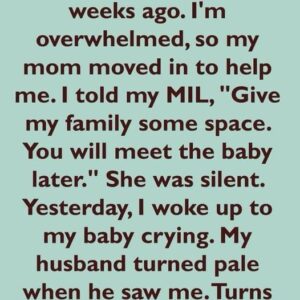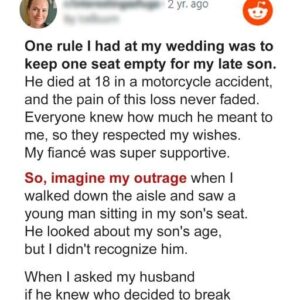Mike was previously married and had a son, Tommy, who has Down Syndrome. Soon after Tommy’s birth, Mike left his family and had no contact with them. He also didn’t provide any support for Tommy. Mike’s family was upset with him for abandoning his son. When his mother found out he was getting remarried, she felt compelled to act. Her main concern wasn’t Mike starting a new family, but rather that he should take responsibility for Tommy. On Mike’s wedding day, as he and his bride were about to exchange vows, his mother entered the church with Tommy, his son with Down Syndrome, in her’arms.
She revealed to everyone, including Mike’s fiancée, how Mike had neglected his son. The fiancée, shocked by the revelation, threw her bouquet at Mike and left the church with her family. Mike’s mother also left soon after. The next day, her cousin Liam told her about Mike’s angry and emotional reaction in front of the guests. Mike’s mother is now unsure if her decision to disrupt the wedding was right. She didn’t intend to ruin the wedding but wanted to teach Mike a lesson about responsibility. Despite the outcome, she doesn’t regret that the wedding was called off. She acknowledged that her actions might seem extreme but felt it was necessary to highlight Mike’s neglect. This situation is complex and emotional. The mother disrupted the wedding to highlight her son’s neglect of his child with Down Syndrome. Her actions, while drastic, were driven by a desire for her son to take responsibility and be a father to Tommy. She hopes this will be a wake-up call for him. In asking if she’s the “asshole” (AITA), she’s seeking validation or critique of her actions. It’s a moral dilemma: on one hand, she wants to advocate for her grandson’s well-being, but on the other, she disrupted a significant life event. This story certainly sparks a conversation about parental responsibilities, family dynamics, and the lengths one might go to for what they believe is right. Sharing this with friends and family on Facebook could invite diverse perspectives and discussions.





